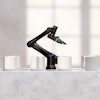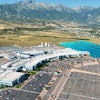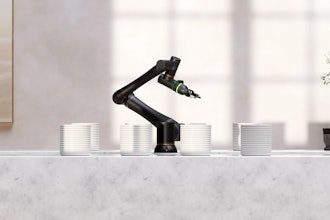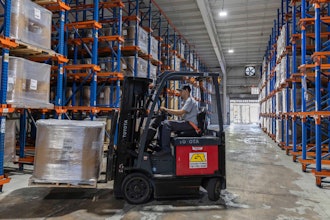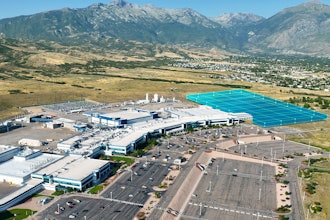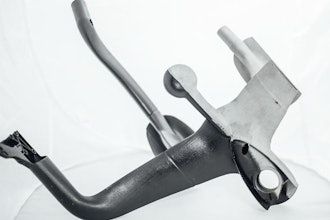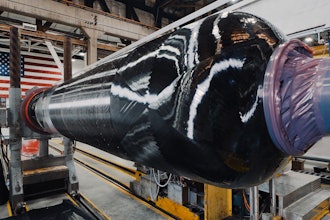
These are the three game-changing predictions I’ve outlined for 2018.
1. By the end of 2018, over 50 percent of manufacturers will be building IoT technology into the design phase of their products.
When you think IoT, is your first thought newly affordable, available sensors being added to products after they’ve been manufactured? If it is, I believe 2018 will change that perception as IoT takes a decisive step forward in its evolution.
If we think of IoT like a product’s nervous system, 2018 will see it grow from picking up signals at the periphery to being the brain of the product—constantly sending, receiving, growing and gathering information from the center of the product throughout its lifetime and, in the process, enabling new services and revenue streams.
According to Global Market Insights, IoT in manufacturing was valued at over $20 billion in 2016 and will grow at more than 20 percent (CAGR estimate) from 2017 to 2024. Current IoT investments that are unique to the manufacturing environment are taking place in three major initiatives:
- Smart manufacturing to increase production output, product quality, or operations and workforce safety as well as lower resource consumption.
- Connected products to impact product performance, including collecting detailed information on products in the field, remote diagnostics and remote maintenance.
- Connected supply chains to increase visibility and coordination in the supply chain, tracking assets or inventory for more efficient supply chain execution.
Manufacturers are realizing that by engineering IoT technology into products and equipment already in the design process, you will be able monitor not only the equipment’s performance to predict when it needs repair, but also how and when it is being used.
By the end of 2018 more than 50 percent of manufacturers will be building IoT technology into their products from day one. In fact, where will our revenue be coming from in the next five years?’ It’s a good question. And it leads us to my next key prediction…
2. Servitization speeds ahead: By 2020, most manufacturers will earn over half of their revenue from services.
With the manufacturing industry becoming more and more commoditized, the need to differentiate is key to survival and profitability. We now see that a large number of manufacturers are shifting to a more service-centric business model—the buzzword is “servitization”.
Servitization is a way for a manufacturer to add capabilities to enhance their overall offering in addition to the product itself. One famous example is Apple, which did this a few years ago when it had gained the majority of market share with the iPod and introduced iTunes to increase loyalty, differentiate itself, and generate more revenue.
You may think that it will never apply to your business, but I see this development among IFS customers. For global furniture manufacturer Nowy Styl Group, servitization has been crucial to its growth. In 2007, it announced “for us, chairs are not enough”, starting a transformation from pure manufacturer to world-class office interior consulting company. Another example is a customer that manufactures cleaning products and started to offer delivery and service dosing systems.
Both customers realized that with technology accelerating as fast as it is, no matter how beautifully designed a chair, or how effective a cleaning product, today’s luxury products turn into tomorrow’s commodities faster than ever, pulling prices down with them. With servitization, manufacturers escape commodification. Services built on years of experience provide a kind of value customers will always pay for, regardless of technology trends.
According to the IFS Digital Change Survey, conducted by the research and publishing company Raconteur, 68 percent of manufacturing companies claim that servitization is either “well-established and is already paying dividends” or “in progress and is receiving appropriate executive attention and support”. However, almost one in three manufacturing companies are still to derive value from servitization.
New technology like IoT adds an additional layer to servitization. With sensors detecting when your product or equipment needs service, this data can trigger an automated service action that will realize significant benefits to make your service organization more effective. This type of automated predictive maintenance will become more and more common as it is a natural next step after implementing IoT to optimize service efforts.
3. By 2019 the hype around 3D printing will be over and the real benefits will take shape.
My third prediction is that 3D printing, just like IoT, will enter a new, more mature phase. No matter how big the ‘wow’ factor is when we first see it, apart from smaller-scale manufacturing production, 3D printing has failed to live up to its full potential. All this could change in 2018.
We are seeing a couple of developments that point in that direction. The first one is the improved scalability of 3D printing solutions. A new generation of 3D printing companies is moving into manufacturing with faster, better connected systems that reduce some of the time-consuming pre- and post-processing that has been such an obstacle to wide-scale uptake.
Stratasys has collaborated on a new printer, the Demonstrator, that combines three printers into a stack system—each printer able to communicate to its neighbors in real time. This means it can significantly increase production capacity, printing from 1,500–2,000 components a day, which means you can achieve an economy of scale to bring costs down.
The aviation industry is pioneering 3D printing technology. One successful example is the new GE turboprop ATP Engine, which was 35 percent 3D printed, taking it down from 855 components to 12. This contributed toward the engine being lighter, more compact, and delivering a 15 percent lower fuel burn and 10 percent higher cruise power.

